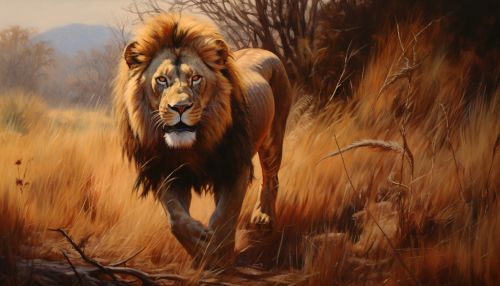Predation
Introduction
Predation is a biological interaction where a predator (an organism that is hunting) feeds on its prey (the organism that is attacked). Predators may or may not kill their prey prior to feeding on them, but the act of predation always results in the death of the prey and the eventual absorption of the prey's tissue through consumption. The other main category of consumption is herbivory, which involves the consumption of autotrophs, such as plants and photosynthetic algae.


Types of Predation
Predation can be classified in various ways based on the type of predator, the type of prey, and the interaction between them.
Carnivory
Carnivores are predators that primarily eat other animals. This can range from large predators such as lions and tigers, to smaller predators like spiders and frogs. Carnivores can further be classified into obligate carnivores, which require a diet of primarily animal flesh, and facultative carnivores, which can survive on a diet that includes non-animal food in addition to animal flesh.
Herbivory
As mentioned earlier, herbivory involves the consumption of plants or plant-based materials. While not traditionally considered predation, some definitions of predation include herbivory due to the harm it can cause to the plant species. Herbivores can range from large mammals such as elephants and deer, to insects like caterpillars and beetles.
Parasitism
Parasites are organisms that live on or in a host organism and derive nutrients at the host's expense. Unlike typical predators, parasites typically do not kill their host, but they can cause significant harm and even lead to the host's death in some cases. Parasites can be microscopic, such as bacteria and viruses, or macroscopic, like ticks and lice.
Parasitoidism
Parasitoids are organisms that behave like both predators and parasites. They lay their eggs on or in their host, and the parasitoid larvae consume the host for nutrients. This process inevitably leads to the death of the host. Many species of wasps and some species of flies are parasitoids.
Adaptations for Predation
Predators have evolved a wide range of adaptations to help them locate, capture, kill, and digest their prey. These adaptations can be anatomical, behavioral, or physiological.
Anatomical Adaptations
Anatomical adaptations for predation include features that enhance a predator's ability to locate, capture, and kill its prey. For example, many predators have acute senses that enable them to detect their prey from a distance or in difficult conditions. Other anatomical adaptations include specialized structures for capturing or killing prey, such as the powerful jaws and sharp teeth of a lion or the venomous sting of a scorpion.
Behavioral Adaptations
Behavioral adaptations for predation involve changes in a predator's behavior that increase its hunting success. These can include strategies for locating and capturing prey, as well as tactics for avoiding detection by prey. For example, many predators use stealth and ambush tactics to surprise their prey, while others use complex hunting strategies that involve cooperation between individuals.
Physiological Adaptations
Physiological adaptations for predation involve changes in a predator's body functions that increase its hunting success. These can include changes in digestion that allow a predator to consume and process a wide range of prey, as well as changes in metabolism that enable a predator to sustain high levels of activity.
Effects of Predation on Ecosystems
Predation plays a critical role in shaping communities and ecosystems. It can control the distribution and abundance of species, influence the diversity of species, and drive the evolution of prey species.
Control of Distribution and Abundance
Predation can control the distribution and abundance of species by reducing the population of prey species. This can prevent prey species from overexploiting their resources and causing ecosystem degradation.
Influence on Species Diversity
Predation can influence the diversity of species in a community by preventing any single species from dominating the community. This can promote a diverse community of species, which can enhance ecosystem stability and resilience.
Evolutionary Drive
Predation can drive the evolution of prey species by selecting for traits that enhance survival. This can lead to the evolution of a wide range of defensive adaptations in prey species, such as camouflage, warning coloration, and mimicry.
